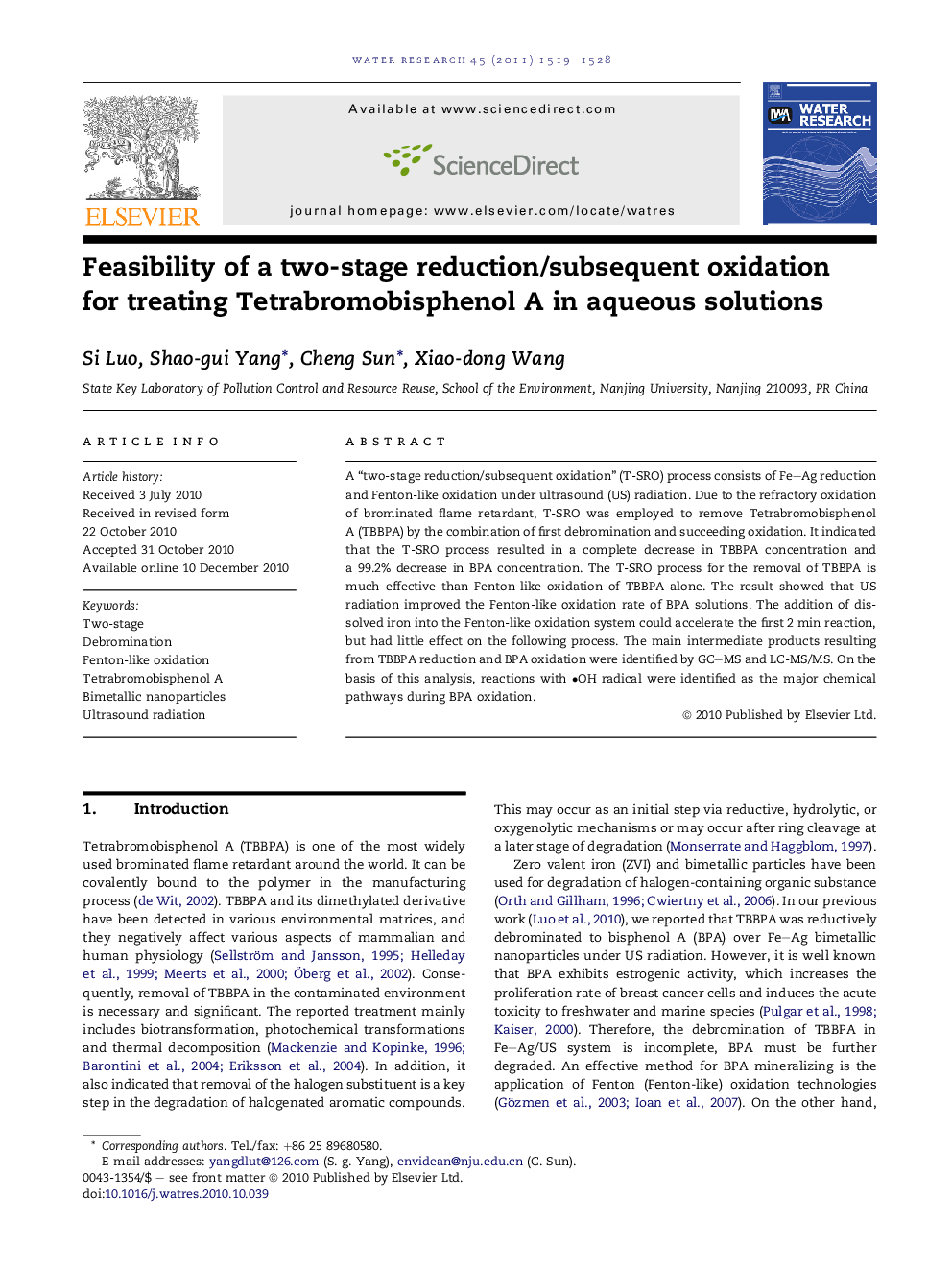| Article ID | Journal | Published Year | Pages | File Type |
|---|---|---|---|---|
| 4483363 | Water Research | 2011 | 10 Pages |
A “two-stage reduction/subsequent oxidation” (T-SRO) process consists of Fe–Ag reduction and Fenton-like oxidation under ultrasound (US) radiation. Due to the refractory oxidation of brominated flame retardant, T-SRO was employed to remove Tetrabromobisphenol A (TBBPA) by the combination of first debromination and succeeding oxidation. It indicated that the T-SRO process resulted in a complete decrease in TBBPA concentration and a 99.2% decrease in BPA concentration. The T-SRO process for the removal of TBBPA is much effective than Fenton-like oxidation of TBBPA alone. The result showed that US radiation improved the Fenton-like oxidation rate of BPA solutions. The addition of dissolved iron into the Fenton-like oxidation system could accelerate the first 2 min reaction, but had little effect on the following process. The main intermediate products resulting from TBBPA reduction and BPA oxidation were identified by GC–MS and LC-MS/MS. On the basis of this analysis, reactions with •OH radical were identified as the major chemical pathways during BPA oxidation.
